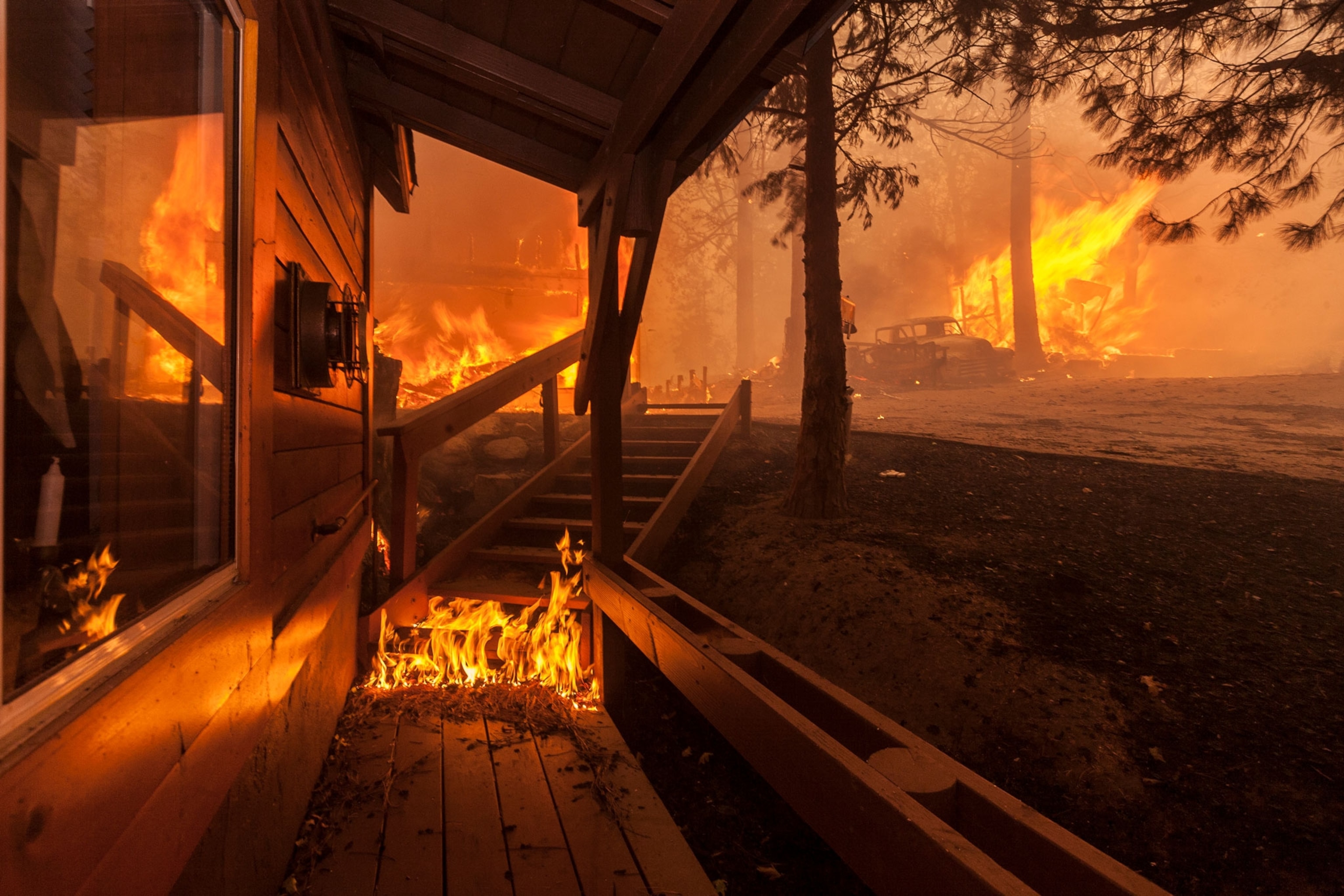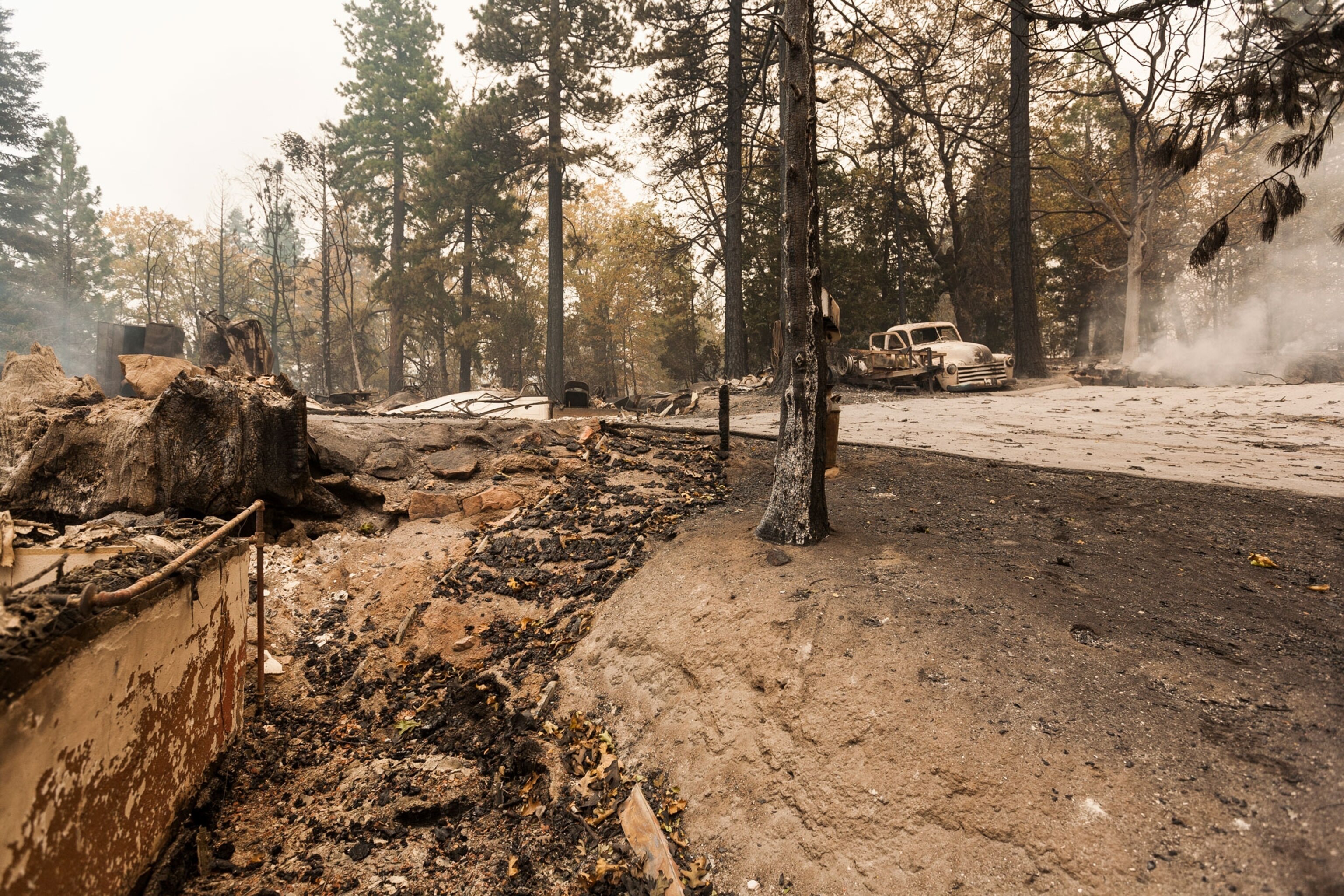Here's What It's Like To Be Inside a Wildfire
Fires like the ones in California spread far and fast. An expert's best advice: evacuate when you're told.
Another season of dry weather and high winds, another series of devastating fires. An expansive blaze in Northern California has now burned nearly 90,000 acres, according to local reports, and has destroyed more than 500 structures, leaving hundreds of people around Redding, California, hurrying to protect their homes, business, and communities.
We spoke with National Geographic photographer Mark Thiessen, a certified wildland firefighter, about how fires spread and how they can be stopped. His footage and images show wildfire damage up close, and how often the smartest thing people can do is to get out of the way.
How does a wildfire spread?
A fire acts like a living organism. The same way a plant spreads its seeds, a fire creates wind to spread its embers. A fire causes hot air and smoke to rise rapidly, pulling in air along the ground to replace it. This creates a wind that will push the fire along which creates a self-perpetuating cycle of fire that is impossible to stop. This wind helps the fire race through forests and neighborhoods, launching embers at everything that could burn. To make everything worse, as the air temperature increases, the relative humidity drops, which dries out the vegetation and makes it catch fire more easily.


What’s the process for a house to catch fire?
An ember the size of a pencil eraser can be blown onto a wood window sill and can begin to burn the house down. It’s not a large tsunami wave of fire that burns down houses, it’s more likely it’s a blizzard of embers from a nearby burning house that get lodged into a flammable exterior of the new house and will start burning it down.
What's the most dangerous place to be when a fire is approaching?
The most dangerous position to be in is trying to evacuate at the last minute. On February 7, 2009, 180 people died in Victoria, Australia, in a single day when 400 fires ravaged the area on Melbourne’s hottest day ever. Many died in last-minute evacuations when strong winds blew black smoke across roads making it impossible to see. These conditions turn day into night while reducing visibility that caused car accidents. It’s best to heed evacuation warnings and get out while you still can.
Why do houses burn easier than trees if they’re both made of wood?
Houses are like flypaper for embers. Strong, dry winds blow embers from already burning homes onto adjacent homes where they stick and ignite. In these-wind driven fires, the embers can blow through the green vegetation and land on structures that are like standing firewood, like a house. Once the fire gets established the home will eventually burn down.
In my before and after photos, you can see embers have landed on some pine needles on the wood deck. Hot, dry winds ignited the pine needles. This is a house in the very early stages of burning down. Everyone has been evacuated, there is no one around to put this small fire out. This house was already a goner.
How do you stop these fires?
Mother Nature causes fires and Mother Nature puts them out. These fires are pushed by the perfect combination of wind, temperature, and low humidity. Until the weather changes, the best firefighters can do is herd the fire around and do their best to protect lives and property. Only when the wind stops, the temperature drops, and the humidity rises do the fires start to put themselves out.





